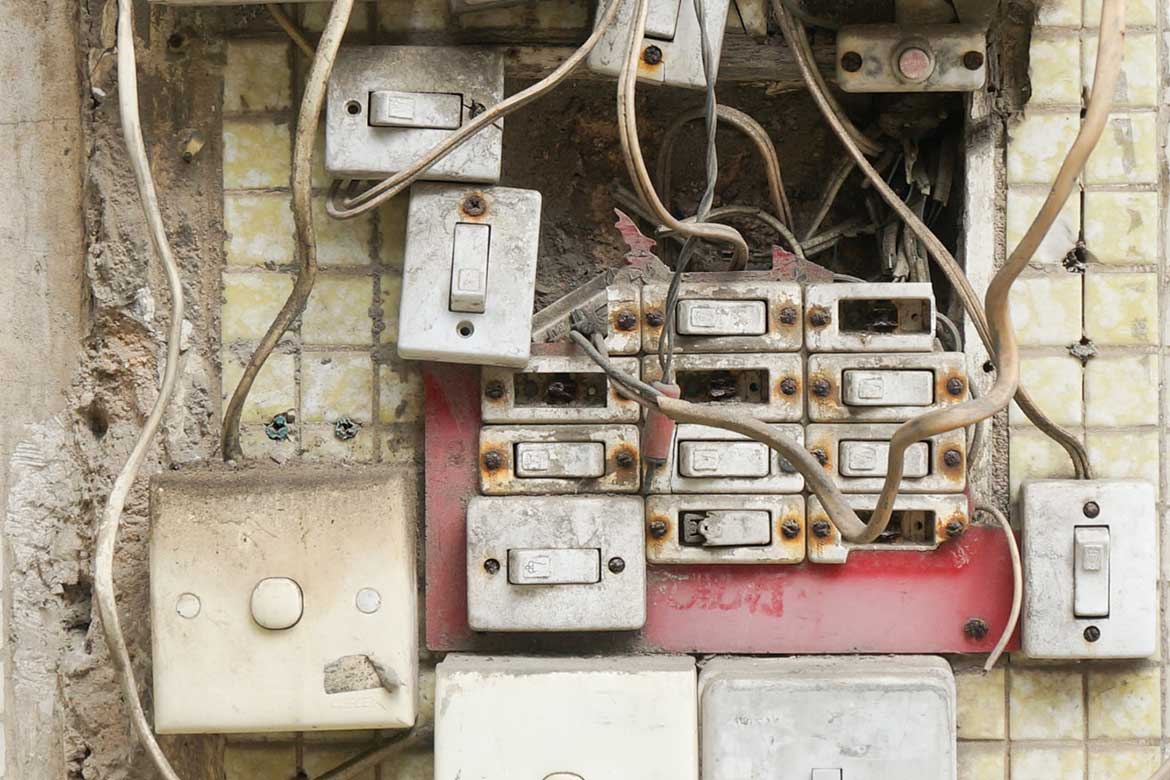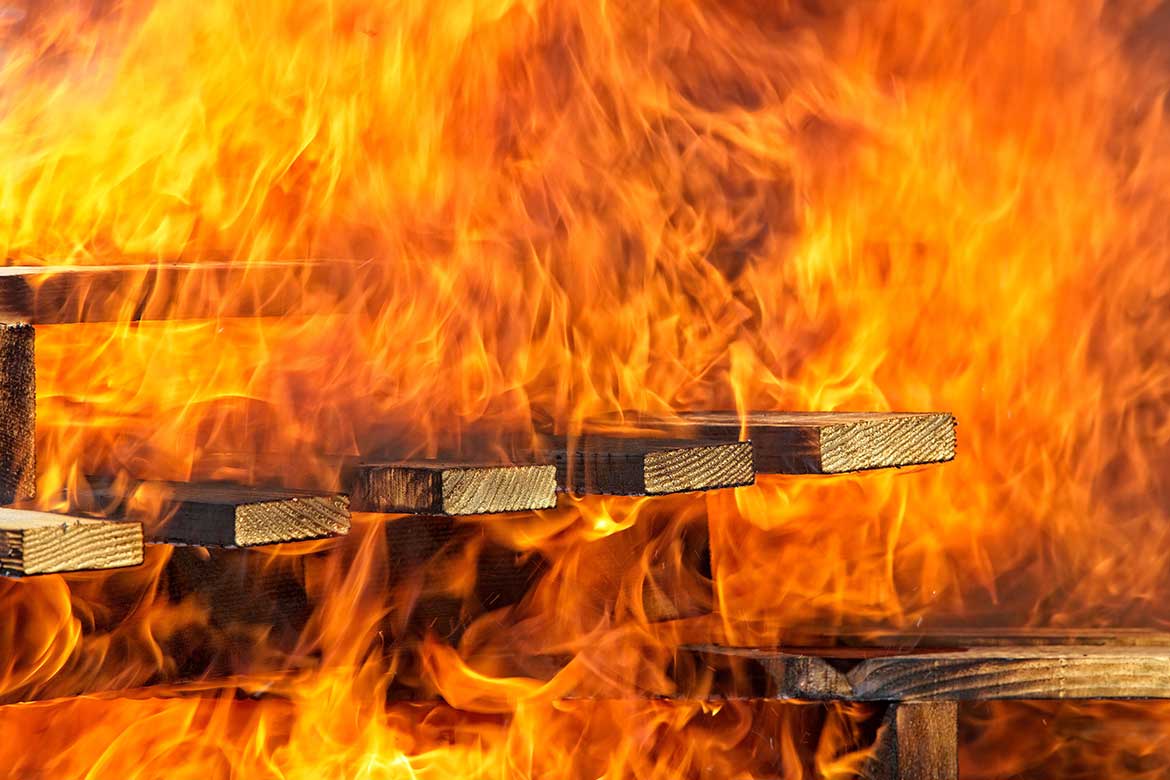11th June, 2024
50 Potential Fire Hazards In The Workplace
Fire hazards in your workplace are anything that may create a fire, and you need to identify them in your fire risk assessment. In this blog post, we will look at the three types of fire hazards you might find in your workplace, including ignition, fuel, and oxygen fire hazards.

The first step of any fire risk assessment is to identify fire hazards. Fire hazards in your workplace are anything that may create a fire.
If you know the fire triangle, then it will be no surprise that fire hazards come into three categories:
- Sources of ignition/heat
- Sources of fuel
- Sources of oxygen
These are the three things needed for a fire: Ignition. Fuel. Oxygen.
Identifying fire hazards is so important that it's the first step in the fire risk assessment. So you'll need to know how to spot fire hazards in your workplace.
Why?
Because once you know the hazards, you can calculate the risk. How likely is it the hazard could start or contribute to a fire? And how serious could the fire be?

Once you have identified the hazards and measured the risk, you can work on ways to reduce the risk - preventing fires from happening and making your workplace safer.
Fire hazards are everywhere, and when you go through the list, you will probably find that many exist in your work environment.
You might not be able to remove all of the fire hazards in your workplace. But remember fire needs all three elements, fuel, heat and oxygen to survive. If you control these hazards and keep them apart, you can reduce the risk.
Let's go through the list of some common examples of fire hazards. If there's a potential fire waiting to happen at your workplace, you might be able to stop it before it starts.
Ignition fire hazards
The majority of fires need an ignition source to start. Identifying ignition sources in your workplace is important so that you can remove them, or control them.
Some ignition sources might always be present, like cooking equipment, but many ignition sources can be introduced during work activities (e.g. welding or hot work), by people (e.g. smoking), or due to faults.

You probably can't remove all ignition sources from your workplace, but you should keep ignition sources separate from combustible materials and other fuel sources to prevent fires.
- Smoking materials
- Electrical faults
- Overheating machinery
- Radiated heat
- Cooking equipment
- Portable and fixed heaters
- Sparks from equipment
- Overloaded electrical circuits
- Static electricity
- Friction
- Hot surfaces
- Steam pipes
- Electrical equipment
- Boilers
- Welding equipment
- Naked flames
- Hot works processes
It's important to consider the use and location of ignition sources. Electrical equipment might be perfectly safe for everyday use. But, take it into a flammable atmosphere, and the risk increases dramatically.
Fuel fire hazards
Fuel is needed to burn for a fire to start and to maintain the fire.
When we talk about fuel as a fire hazard, we don't just mean the fuel you fill your car up with (petrol and diesel). Fire is not fussy and accepts a wide variety of fuel sources. Fuel for fire can come in the form of combustible materials, oils, flammable liquids and gases.

Removing the fuel, reducing fuel, and separating the fuel from ignition sources are all ways to minimise fire risk.
The type of fuel will usually determine the class of the fire, and the type of fire extinguisher you can safely use to put it out.
So what types of fuel are present in your workplace? Here are some examples:
- Paper
- Cardboard
- Packaging
- Waste
- Furniture
- Textiles
- Fixtures and fittings
- Electrical insulation
- Metals
- Wood
- Plastics
- Foam
- Sealants
- Structural materials
- Wall linings
- Ceiling linings
- Flooring
- Cladding
- Paints
- Inks
- Adhesives
- Cleaning fluids
- Chemicals
- Liquids
- Solvents
Most furniture, fixtures, and fittings are flame-resistant, but not all. It's best to check to make sure. Finishes can deteriorate over time so look for signs of wear and tear.
Never assume that building materials are non-combustible. Structural materials are not easily combustible, but some are covered with layers of cardboard or wallpaper which may spread the fire. There have been cases recently regarding cladding (e.g. Grenfell) acting as a fuel source and quickly spreading the fire.
Flammable chemicals, liquids and solvents need to be stored correctly and used safely to reduce fire risks. Flammable liquids give off vapours that can travel, so careful consideration of the distance from ignition sources is needed.
Oxygen fire hazards
Oxygen is everywhere. We need it to survive, and luckily for us, it's in the air we breathe. But fires also need oxygen to survive, and because it's readily available, it's the hardest type of fire hazard to control.

Knowing where oxygen is readily available, and how it can be stopped, can help prevent fire spread.
- Open windows
- Open doors
- Natural ventilation
- Air conditioning systems
- Holes in the structure
- Oxidising materials
- Oxygen cylinders
- Oxygen systems
Not all ventilation is bad. Sometimes, you might need good ventilation to reduce the risk of fire. For example, when storing or using flammable liquids, good ventilation can prevent the build-up of vapour and the creation of a flammable atmosphere.
This list is just an example. You might find some of these fire hazards in your workplace, or there might be different hazards. Use this list to help you look for fire dangers. You can identify fire hazards through a simple walk around or inspection.
Identify items from each source:
- ignition
- fuel
- oxygen
How do the fire hazards interact with each other? Give particular attention when ignition sources are close to fuel sources. Could they create a fire risk?
And remember that your work and the people in your workplace might introduce fire hazards, so don't forget to think about the type of work that is carried out.

It's easy to just look at an empty work area and forget what happens in it. Especially when an activity might just be carried out once a month, or once a year. What about maintenance or cleaning work? What about work activities carried out by contractors?
Before a new task is carried out, assess if it introduces any new sources of ignition, fuel or oxygen.
- Does it create a fire risk?
- Does it make the atmosphere flammable or unsafe?
- Could it spark a fire?
You can find out more about the types and classes of fire, or carry out a fire risk assessment for your business.
This article was written by Emma at HASpod. Emma has over 10 years experience in health and safety and BSc (Hons) Construction Management. She is NEBOSH qualified and Tech IOSH.
Fire Safety Course
Take our fire safety elearning course and get your certificate today.
Fire Safety CourseRecent posts like this...

What Type Of Fire Extinguisher Should You Use On Construction Sites?
On a construction site, like any other workplace, you should always have suitable fire extinguishers readily available and a fire and emergency plan in place. But what type of fire extinguisher should you use on a construction site? Water, foam, powder, carbon dioxide, or wet chemical?
Read Post
13 Fire Prevention Tips For Construction Sites
Construction sites are at a high risk of fire, so fire prevention must be a top priority when planning and managing construction work. There are a few reasons why a fire could start on your site, but there are ways to make it less likely. Here are 13 tips for fire prevention on construction sites.
Read Post
Who Is Responsible For Completing A Fire Risk Assessment?
Fire risk assessments are a legal requirement for any building that isn't a single private dwelling. But who is responsible for completing the fire risk assessment? In this blog post, we learn about the responsible person under the Regulatory Reform (Fire Safety) Order (RRFSO).
Read Post